Introduction
Stir-fried greens and mushrooms, a dish celebrated for its simplicity, vibrant flavors, and nutritional prowess, is a cornerstone of home-cooked meals across Asia and beyond. This humble yet versatile recipe combines earthy mushrooms with crisp, leafy greens, creating a harmony of textures and tastes that appeals to both novice cooks and seasoned chefs. The beauty of this dish lies in its adaptability—it can be tailored to suit dietary preferences, seasonal produce, and even time constraints. Whether you’re seeking a quick weeknight dinner, a side dish to complement a feast, or a way to incorporate more vegetables into your diet, mastering this recipe is a culinary skill worth honing. In this comprehensive guide, we’ll explore the nuances of selecting ingredients, perfecting cooking techniques, and elevating this dish to gourmet heights.
The Philosophy Behind the Dish
At its core, stir-frying is a dance of heat, timing, and balance. The technique, rooted in Chinese culinary tradition, involves cooking ingredients over high heat in a minimal amount of oil, preserving their natural flavors, colors, and nutrients. When applied to greens and mushrooms, this method ensures the vegetables retain their crispness while absorbing the savory notes of aromatics like garlic and ginger. The result is a dish that is both light and satisfying, bridging the gap between health-conscious eating and indulgent flavor.
Ingredients: Building the Foundation
To create a memorable stir-fry, start with quality ingredients. While the recipe is forgiving, freshness is key. Here’s a breakdown of the essential components:
-
Greens: Select crisp, vibrant leaves. Popular choices include:
- Bok choy: Mild and tender, with a subtle sweetness.
- Spinach: Rich in iron, with a delicate texture.
- Kale: Heartier, with a slightly bitter edge.
- Gai lan (Chinese broccoli): Offers a crunchy stem and florets.
-
Mushrooms: Choose varieties that complement the greens:

- Shiitake: Meaty and umami-rich.
- Button mushrooms: Mild and versatile.
- Oyster mushrooms: Tender with a velvety texture.
- Enoki: Slender and crisp, adding a unique flair.
-
Aromatics: Essential for depth:
- Garlic: 4–5 cloves, minced.
- Ginger: 1-inch piece, grated.
- Scallions: 2–3 stalks, sliced (optional).
-
Seasonings:
- Soy sauce: 1–2 tbsp (use tamari for gluten-free).
- Oyster sauce: 1 tsp (optional, for richness).
- Sesame oil: 1 tsp (toasted for nuttiness).
- Salt and pepper: To taste.
- Sugar: A pinch to balance flavors.
-
Oil: Neutral oil like vegetable or peanut (2–3 tbsp).
-
Optional Additions:
- Chili flakes: For heat.
- Shaoxing wine: 1 tbsp (adds complexity).
- Cornstarch slurry: 1 tsp cornstarch + 2 tbsp water (to thicken sauce).
Preparation: The Devil Is in the Details
Before igniting the stove, meticulous preparation ensures a seamless cooking process.
-
Washing and Drying:
- Rinse greens under cold water, gently shaking off excess moisture. For leafy varieties like spinach, use a salad spinner to remove hidden water.
- Wipe mushrooms with a damp cloth (avoid soaking, as they absorb water and become soggy).
-
Cutting Techniques:
- Greens: Separate stems from leaves. Slice stems into 1-inch pieces; tear leaves into bite-sized portions.
- Mushrooms: Halve or quarter depending on size. Thick-stemmed varieties like shiitake benefit from slicing.
- Aromatics: Mince garlic and ginger finely to ensure even distribution.
-
Mise en Place:
Arrange ingredients near the stove in the order they’ll be used. Stir-frying moves quickly, so readiness is non-negotiable.
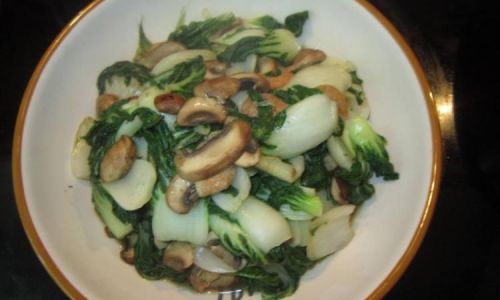
The Cooking Process: A Symphony of Heat and Motion
Stir-frying is as much about technique as it is about ingredients. Follow these steps for perfection:
-
Heat the Wok:
Place a wok or large skillet over high heat. Allow it to smoke lightly—this ensures a non-stick surface and sears ingredients quickly.
-
Add Oil:
Swirl 2–3 tbsp of oil around the wok. The oil should shimmer but not smoke.
-
Sauté Aromatics:
Toss in garlic and ginger. Stir constantly for 10–15 seconds until fragrant but not browned (burnt aromatics turn bitter).
-
Cook Mushrooms:
Add mushrooms in a single layer. Let them sear undisturbed for 1 minute to develop caramelization. Stir-fry for 2–3 minutes until golden.
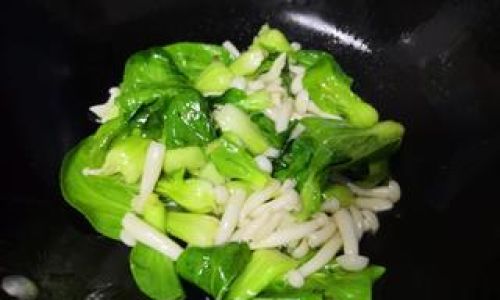
-
Introduce Greens:
Add stems first (they take longer to cook). Stir-fry for 1 minute, then add leaves. Toss vigorously to wilt evenly.
-
Season:
Drizzle soy sauce, oyster sauce (if using), and a pinch of sugar around the wok’s edges (this caramelizes the sauce). Toss to coat.
-
Finish with Flair:
Drizzle sesame oil and sprinkle scallions. For a glossy finish, add a cornstarch slurry and stir until the sauce thickens.
-
Serve Immediately:
Transfer to a plate to halt cooking. Garnish with sesame seeds or chili flakes.
Troubleshooting Common Pitfalls
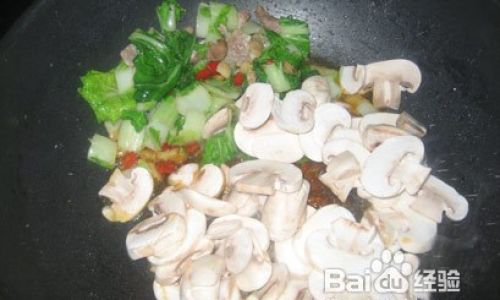
- Soggy Greens: Overcrowding the wok releases moisture. Cook in batches if necessary.
- Bland Flavor: Under-seasoning or insufficient aromatics. Taste and adjust mid-cook.
- Mushy Mushrooms: Overcooking. Remove them early if unsure.
- Burnt Garlic: Lower heat if the wok is too hot.
Variations: Unleash Your Creativity
- Spicy Kick: Add fresh chili or Sriracha during sautéing.
- Nutty Crunch: Top with toasted cashews or peanuts.
- Protein Boost: Toss in cubed tofu or shredded chicken during the mushroom stage.
- Citrus Zing: Squeeze lime juice before serving.
- Fermented Depth: Swap soy sauce for tamari or add a splash of black vinegar.
Pairing Suggestions: Beyond the Bowl
- Rice: Fluffy jasmine or nutty brown rice.
- Noodles: Soba, udon, or thin egg noodles.
- Grains: Quinoa or farro for a hearty twist.
- Soups: Ladle over miso soup for a comforting meal.
The Health Benefits: Nourishment in Every Bite
This dish is a nutritional powerhouse:
- Greens: Packed with vitamins A, C, and K, fiber, and antioxidants.
- Mushrooms: Provide B vitamins, selenium, and immune-boosting properties.
- Low-Calorie: Ideal for weight management.
- Gluten-Free/Vegan: Easily adaptable to dietary needs.
Advanced Techniques: Elevating the Everyday
- Velveting: Marinate mushrooms in a mixture of cornstarch, soy sauce, and oil for 15 minutes before cooking. This seals in moisture and creates a silken texture.
- Smoky Flavor: Use a blowtorch to char the wok’s edges post-cooking for a subtle campfire aroma.
- Plating: Mound the greens in the center of a plate, arrange mushrooms artfully around them, and drizzle sauce in a decorative pattern.
Cultural Context: A Dish That Transcends Borders
While stir-frying originated in China, variations exist worldwide. In Japan, horenso no gomaae (spinach with sesame dressing) shares similarities, while Italian cime di rapa (broccoli rabe) with garlic and chili mirrors the technique. This dish’s adaptability reflects global culinary exchange—a testament to its universal appeal.
Conclusion: A Skill for Life
Mastering stir-fried greens and mushrooms is more than cooking—it’s an exercise in mindfulness. The rhythm of chopping, the sizzle of the wok, and the aromatic steam that fills your kitchen connect you to centuries of tradition. Whether you’re a busy parent, a student craving comfort food, or a home cook honing your craft, this dish rewards effort with flavor. So grab your wok, sharpen your knife, and let the symphony of greens and mushrooms begin. Your journey to culinary mastery starts with a single stir.

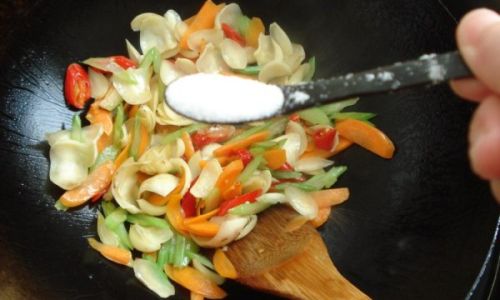
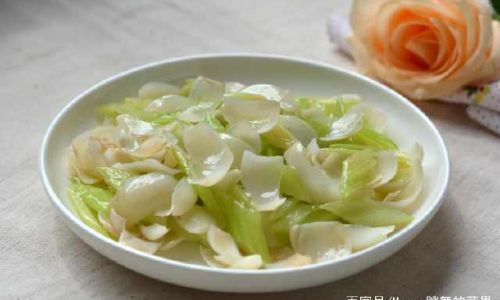


0 comments